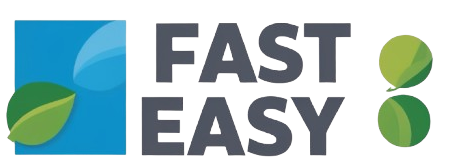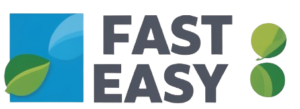Are you struggling to manage your finances effectively? Personal cash flow management is the key to transforming your financial situation. By understanding and implementing a personal cash flow system, you can gain control over your money, make informed decisions, and achieve financial stability. This comprehensive guide will teach you how to set up and manage your personal cash flow, revolutionizing your approach to budgeting and financial planning.
1. Understanding Personal Cash Flow
Personal cash flow refers to the movement of money in and out of your personal accounts. It encompasses all sources of income and all categories of expenses, providing a holistic view of your financial situation. Unlike a simple budget, which often focuses solely on expenses, cash flow management considers both income and expenses, allowing for a more dynamic and responsive approach to financial planning.
Why You Need Personal Cash Flow Management
- Comprehensive Financial Overview: Cash flow management offers a complete picture of your financial health, highlighting areas of strength and potential improvement.
- Informed Decision-Making: With a clear understanding of your cash flow, you can make informed decisions about spending, saving, and investing.
- Proactive Financial Planning: By anticipating future cash flow needs, you can plan for upcoming expenses and avoid financial shortfalls.
- Enhanced Savings and Investment Opportunities: Effective cash flow management can free up resources for savings and investments, helping you build wealth over time.
2. Setting Up Your Personal Cash Flow System
Creating an efficient personal cash flow system involves several key steps:
Mapping Income
Begin by identifying all sources of income. This includes:
- Fixed Salary: Regular income from employment.
- Variable Income: Earnings from freelance work, side jobs, or bonuses.
- Investment Returns: Income generated from investments such as dividends or interest.
- Other Income: Any additional sources of income, such as rental income or gifts.
Organizing Expenses
Next, categorize your expenses to gain a clear understanding of your spending patterns. Common categories include:
- Essential Fixed Expenses: Regular, unavoidable costs such as rent, utilities, and insurance.
- Variable Expenses: Costs that fluctuate monthly, such as groceries, dining out, and entertainment.
- Scheduled Investments: Regular contributions to savings accounts, retirement funds, or investment portfolios.
- Emergency Reserve: Funds set aside for unexpected expenses or financial emergencies.
3. Tools for Personal Cash Flow Management
To effectively manage your personal cash flow, consider utilizing the following tools:
- Finance Apps: Applications like Mint, YNAB (You Need a Budget), and PocketGuard can help you track income and expenses, set budgets, and monitor financial goals.
- Customized Spreadsheets: For those who prefer a more hands-on approach, creating a personalized spreadsheet can provide flexibility and control over your financial data.
- Financial Management Systems: Comprehensive systems like Quicken or Personal Capital offer advanced features for tracking and analyzing cash flow, investments, and net worth.
4. Practical Tips for Maintaining an Organized Personal Cash Flow
Implementing a personal cash flow system is just the beginning. To ensure its effectiveness, follow these practical tips:
Daily Tracking
- Record Expenses Promptly: Enter all expenses as they occur to maintain an accurate record.
- Organize Receipts: Keep digital or physical copies of receipts for reference and verification.
- Utilize Financial Apps: Leverage technology to automate tracking and receive real-time updates on your financial status.
Weekly Analysis
- Review Transactions: Regularly review all financial transactions to identify trends and discrepancies.
- Compare with Budget: Assess your spending against your budget to ensure alignment with financial goals.
- Adjust Goals as Needed: Be flexible and adjust financial goals based on changes in income or expenses.
Monthly Planning
- Set Clear Objectives: Define specific financial objectives for the month, such as saving a certain amount or reducing debt.
- Create Realistic Goals: Ensure goals are achievable based on your current financial situation.
- Monitor Progress: Regularly check your progress towards monthly objectives and make adjustments as necessary.
5. Expected Results with Personal Cash Flow Management
By implementing a personal cash flow system, you can expect several positive outcomes:
- Greater Financial Control: Gain a clear understanding of your financial situation and make informed decisions.
- Reduction of Impulsive Spending: Identify and eliminate unnecessary expenses, leading to more mindful spending habits.
- Increased Savings Capacity: Free up resources for savings and investments, enhancing your financial security.
- Improved Financial Planning: Anticipate future financial needs and plan accordingly, reducing stress and uncertainty.
- Enhanced Peace of Mind: Achieve greater confidence and peace of mind knowing your finances are under control.
6. Frequently Asked Questions (FAQ)
- How long does it take to see results with personal cash flow management?
With consistent effort and daily tracking, you can begin to see positive results within 30 days. - Do I need advanced financial knowledge to manage personal cash flow?
No, basic math skills and a willingness to learn are sufficient to get started. - What is the best tool for personal cash flow control?
The best tool is one that you find easy to use and can consistently integrate into your routine.
Conclusion
Personal cash flow management is a powerful tool for anyone seeking to take control of their finances and achieve financial independence. By following the strategies outlined in this guide, you can transform your approach to budgeting, enhance your financial planning, and ultimately enjoy a more secure and prosperous future.
💡 Final Tip
Don’t wait to start managing your personal cash flow. The best time to take control of your finances is now, regardless of your current situation. Begin today and take the first step towards financial empowerment.
Useful Links:
This article was written by personal finance experts and is regularly updated to ensure the most accurate information on financial management.
You might also like:
- Tourist Spots in the Interior of São Paulo: Wonders of the Paulista Countryside
- Emergency Fund in 6 Months: Security Within Your Reach
- The Ideal Credit Card for You: A Complete Guide
- Basic Mashed Potatoes: Simplicity and Flavor in Every Spoonful
- Chef John’s Creamy Corn Pudding: An Irresistible Delight


